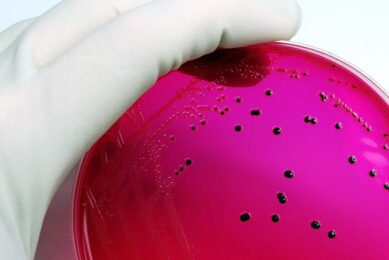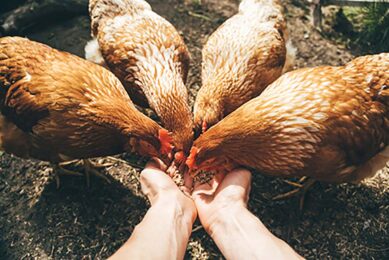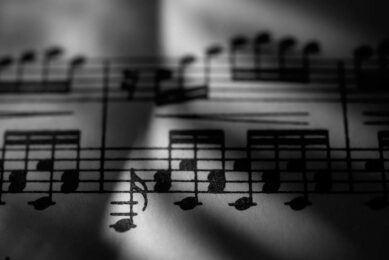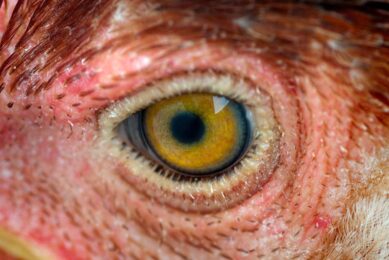Flies and Salmonella: dangerous duo in poultry houses

Flies may be more than a mere nuisance in poultry houses. They may also spread food poisoning bacteria such as Salmonella enteritidis to chickens and their eggs, the USDA ARS reports.
The common housefly, Musca domestica, readily picks up bacteria from its surroundings, says Agricultural Research Service (ARS) microbiologist Peter S. Holt* and entomologist Christopher J. Geden**. When the chickens eat the flies, the bacteria get inside the birds.
In three experiments, Holt placed chickens in individual, adjacent laying cages. Geden delivered fly pupae just 48 hours short of hatching as flies; this timing ensures the flies aren’t exposed to any microbe prior to emergence. The fly pupae were placed in an open box in the bird room. Three days later, hens were orally infected with Salmonella.
The researchers detected the bacteria in and on 45-50% of the flies within the first 48 hours of the flies’ hatching.
Uninfected hens were then exposed to the newly infected flies. Just being around the flies didn’t cause healthy birds to become infected, but eating infected flies did. This showed that simple physical contact may not be the primary method of transfer of Salmonella bacteria to different surfaces in a poultry house. But, according to the researchers, a hen’s eating of contaminated flies does seem to be the primary mechanism of transmission of Salmonella from flies to birds.
According to Holt, this shows that flies in poultry houses are not only a nuisance, but also a threat to the safety of poultry products.
* Holt works in the Egg Safety and Quality Research Unit at the ARS Richard B. Russell Research Center in Athens, Ga.
** Geden is at the ARS Center for Medical, Agricultural and Veterinary Entomology in Gainesville, Fla.
Related links:
Join 31,000+ subscribers
Subscribe to our newsletter to stay updated about all the need-to-know content in the poultry sector, three times a week. Beheer
Beheer








 WP Admin
WP Admin  Bewerk bericht
Bewerk bericht